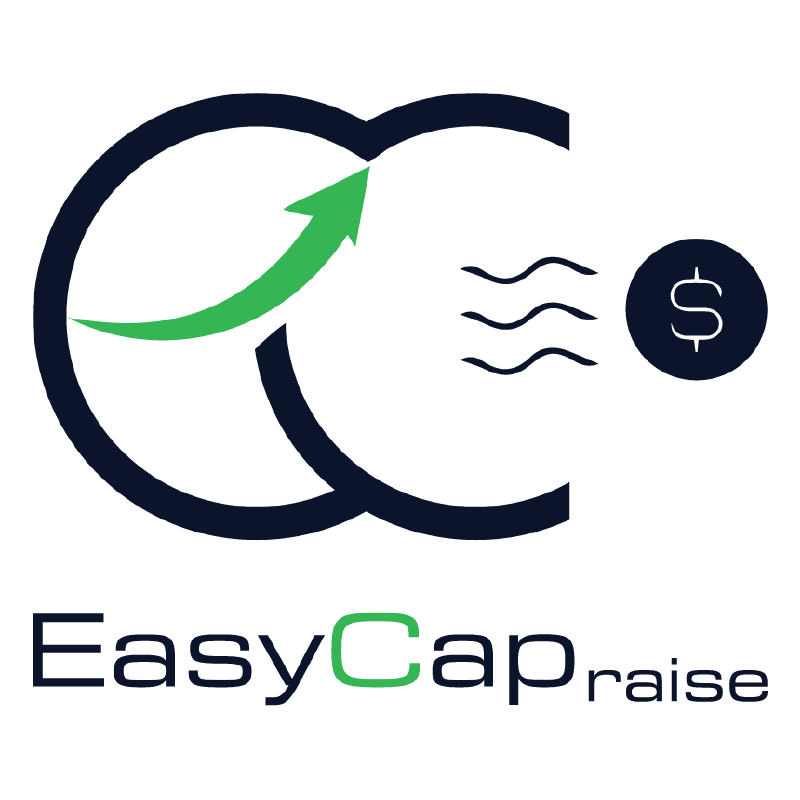This article writes about the importance of a white paper for blockchain startups to establish credibility and attract investors.
Writing a White Paper for Your Blockchain Startup: A Step-by-Step Guide

The Importance of a Comprehensive White Paper in the Blockchain Industry
The cryptocurrency market has experienced significant growth in recent years, with more and more individuals and institutions becoming interested in digital assets. In order for a crypto project to be successful, it is essential for the team behind it to have a clear and well-crafted blockchain white paper that accurately explains the project’s goals, technology, and tokenomic model. A crypto white paper serves as a roadmap for the project, and potential investors and partners often use it to evaluate the viability and potential of the project. It also helps to establish trust and transparency in the project, which is crucial for gaining the support and adoption needed for success in the competitive cryptocurrency market.
In this guide, we aim to provide a comprehensive understanding of white papers in the blockchain industry. We begin by defining what a white paper is and why it is a crucial component of every crypto project. We then delve into the key elements that should be included in a white paper and provide guidelines on how to effectively present and explain each section. The main objective of this guide is to equip you with the knowledge and tools necessary to create a compelling and informative white paper for your crypto project.
Blockchain White Papers: An Essential Tool for Evaluating Projects
A white paper is a document that provides a detailed explanation of a blockchain-based project or technology. Blockchain startups commonly use it to present their ideas and plans to potential investors. The white paper typically includes information on the project’s goals, the technology behind it, and the team behind the project. It also outlines the project’s use cases and their potential impact on the blockchain and crypto industry. White papers are crucial for startups planning to launch an initial coin offering (ICO), as it helps establish credibility and trust with potential investors. They serve as a guide for anyone interested in understanding and evaluating the project, and they help those people to understand the technical, economic, and business aspects of the project. Overall, the white paper is an essential resource for anyone interested in learning more about the blockchain and crypto.
Establishing Credibility: The Power of a Crypto White Paper
Having a white paper is a crucial step for any blockchain startup in the crypto world. It helps establish credibility and builds trust with potential investors. By providing a transparent and detailed explanation of the project’s goals, technology, and team, it serves as a valuable resource for evaluating the potential value and impact of the project on the blockchain and crypto industry. Additionally, white papers are often a requirement for initial coin offerings (ICOs) and help attract and educate potential investors. They provide a technical description of the project’s architecture, consensus mechanism, and token economy, making it easier for people to understand the technology behind it. In a crowded and competitive space like crypto, having a white paper helps a startup stand out and shows its commitment to transparency and accountability.
Exploring the Different Forms of White Papers in the Cryptocurrency World
In the crypto industry, there are several types of white papers that are commonly used:
-
Technical white papers:
These focus on the technical aspects of a particular blockchain-based project or technology and include information on the system architecture, consensus mechanism, and smart contract functionality. They also provide a detailed description of the security features and the network scalability.
-
Business white papers
These focus on the business model, use cases, and potential impact of the project on the crypto industry. They also provide a clear explanation of the project’s revenue streams and token economics (also referred to as tokenomics).
-
Research white papers
These are often academic in nature and provide a theoretical and research-based approach to the topic, including mathematical proofs and formal models.
-
Industry-specific white papers
These focus on specific industries like DeFi, gaming, web3, and metaverse, and describe the project’s use cases, business model, and technical architecture in relation to that specific industry.
The type of white paper depends on the specific project and its focus. Still, generally, all white papers share the goal of providing a detailed and transparent explanation of the project’s goals, technology, and team, and its potential impact on the crypto industry.
Standard Format of a White Paper in the Cryptocurrency Industry: An Overview
There is often a similar structure to white papers for cryptocurrency projects, regardless of the solutions proposed and technological advancements. In this regard, we will explain the general format of a standard white paper in the industry. However, note that certain adjustments may be necessary based on each project’s specifics and underlining technology.
Here is the general outline for a crypto white paper:
- Executive Summary/Introduction
- Challenges and Risks
- Solution: Product and Technology
- Tokenomics
- Team
- Roadmap
Executive Summary/Introduction
The executive summary, also known as the introduction, is the first section of your white paper. It should provide a brief overview of your project, including the problem you’re solving, the solution you’re offering, and the benefits of your technology. This section should be written in a way that is easy to understand for both technical and non-technical readers.
Challenges and Risks
The next section of your white paper should address the challenges and risks associated with your startup. This includes any technical challenges you may face, as well as any regulatory or legal risks. It’s important to be transparent about these challenges and risks so potential investors can make informed decisions.
Solution: Product and Technology
The solution section of your white paper should provide a detailed explanation of how your startup plans to solve the problem you’ve outlined in the introduction. This includes a description of your technology, how it works, and how it addresses the challenges and risks you’ve identified.
When writing the technology section of a crypto white paper, it is important to clearly and concisely explain the technical details and workings of the proposed solution or approach. This section should include:
- A detailed explanation of the technology or method used: This should include a technical overview of the architecture and how the system operates, including any relevant protocols or algorithms used.
- Use of blockchain technology: Explain how blockchain technology is used in the proposed solution. It is important to explain how the blockchain is used to secure the system, how transactions are processed, and how consensus is achieved.
- Technical specifications: This should include information about the platform’s scalability, security, and performance.
- Code availability: Provide links to any publicly available code, such as on Github, to allow readers to review the code and verify the claims made in the white paper.
- Future developments: Outline any planned future developments and upgrades to the technology.
It is important to present this information in a clear and easy-to-understand manner, avoiding technical jargon as much as possible. It is also important to provide references and links to any relevant research or publications to support the claims made in the technology section.
Tokenomics
Tokenomics, also known as Token Economy, refers to the economic and financial aspects of a token or cryptocurrency. It includes how the tokens are created, distributed, and used within the ecosystem of the project they belong to. Tokenomics also encompasses the strategies and mechanisms used to increase the value of the token and incentivize adoption, such as buyback and burn, staking, or governance tokens. Tokenomics is a critical component of any cryptocurrency project, as it determines the overall value and utility of the token for holders and the incentives for the adoption and usage of the token within the project’s ecosystem.
The tokenomics section of a crypto white paper should include the following information:
- The total number of tokens that will be created for the project.
- Token distribution: How many tokens will be sold in a token sale, how many will be reserved for the team, advisors, and strategic partners, and any other relevant distribution information.
- Token use cases: The specific use cases for the token within the project’s ecosystem, such as being used as a medium of exchange, access to premium features, or as a store of value.
- Token value: Information about any mechanisms in place to increase or decrease the token’s value, such as buyback and burn, staking, or other similar strategies.
- Token sale details: Information about the token sale, such as the date and time of the sale, the price of the token during the sale, the minimum and maximum purchase limits, and the accepted payment methods.
This is a general overview of the information that should be included in the tokenomics section of a crypto white paper, but it’s also important to consider the specific needs of the project and adjust accordingly.
Team
The team section of your white paper should provide information on the people behind your startup. This includes the key members of your team, their qualifications, and their relevant experience. It’s important to provide information on the team’s experience and qualifications to help potential investors understand their level of expertise and the potential of the project.
Roadmap
The roadmap section of your white paper should provide a clear and detailed plan of action for your startup. This includes the milestones you plan to achieve, the timeline for achieving them, and any other relevant details. It’s important to provide a roadmap that is realistic and achievable to help potential investors understand the potential of your project.
Design and Layout
The design of a crypto white paper should be professional and easy to read. The layout should be clear and organized, with headings and subheadings used to break up the text and make it easy to navigate.
It should include images, charts, and diagrams that help to explain complex technical concepts, and the use of bullet points, tables, and other formatting elements can also help to make the information more digestible. The white paper should be visually appealing, with a consistent design and use of colors, typography, and imagery.
Finally, it’s important to check the white paper for grammatical and typographical errors before publishing it, to ensure that it is polished and professional.
Examples of Successful Crypto White Papers
- Sandbox: The Sandbox white paper titled “The Sandbox”: A Decentralized Gaming Metaverse” was published in 2019. It introduced the concept of a blockchain-based virtual gaming world where players can create, share, and monetize their own game experiences.
- Polygon: The Polygon white paper “Polygon”: A Scalable and Secure Blockchain” was published in 2021. It introduced the concept of a Layer 2 scaling solution for Ethereum that allows for faster and cheaper transactions, enabling the development of decentralized applications and services.
- Axie Infinity: Axie Infinity’s white paper outlines the concept and vision behind the blockchain-based game. It explains the use of NFTs to represent unique creatures called Axies and the benefits of using blockchain technology for ownership, trading, and gaming. The white paper also describes the game’s ecosystem, which includes battles, breeding, and a marketplace for buying and selling Axies. Additionally, it outlines the potential for players to earn rewards through participation in the game and the use of the in-game currency, SLP, for transactions within the ecosystem.
- Decentraland: Decentraland is a virtual reality platform that runs on the Ethereum blockchain. It allows users to create, experience, and monetize content and applications in a virtual world. In its white paper, the project outlines its vision for a decentralized virtual world where users have full control over their content and experiences. The platform uses a combination of blockchain technology, smart contracts, and virtual assets to enable ownership and scarcity in the virtual world.
These are just a few examples of recent successful white papers in the crypto industry. These projects have attracted significant investment and have become widely recognized and adopted in the blockchain and crypto industry. They have also been able to deliver on their promises and have become successful in their respective fields.
A Well-Written White Paper is a Game Changer for Your Crypto Startup
As we said in the guide, having a good white paper is a must for every crypto project because it shows the full potential of a crypto startup to investors. Creating a white paper is a demanding task that requires expertise and a deep understanding of the blockchain industry. A well-written and professionally designed white paper can attract investors to a startup and contribute to its success and increase the likelihood of a successful initial coin offering (ICO).
At Easy Capraise, we help crypto startups to have a strong white paper according to the highest level of industry standards.
FAQs about Blockchain White Papers
What is a white paper in the blockchain industry?
A white paper in blockchain is a document that provides a detailed explanation of a blockchain project. It typically includes information on the problem the project aims to solve, the proposed solution, the technical specifications of the project, the token economics and the use case of the token in the ecosystem, the team behind the project, legal and regulatory considerations, and a roadmap for future development and milestones. White papers are intended to be technical documents and are meant for a more advanced audience, such as developers and investors. They provide a thorough understanding of the project and its underlying technology and are used as a basis for decision-making by potential investors, developers, and other stakeholders in the blockchain space.
How do you write a blockchain white paper?
To write a blockchain white paper, begin by identifying the problem or pain point your project aims to solve and research the current limitations in the industry. Clearly explain how your blockchain project addresses the problem, describe the technical aspects—such as consensus mechanism, scalability, security, and privacy—outline the token economics and use cases, introduce the team and their relevant experience, including any legal and regulatory considerations, and end with a roadmap for future development and milestones.
How do you write the tokenomic section of a white paper?
The tokenomic section of a white paper should clearly explain the economics and monetary policy of the project’s token. This includes information such as the total supply of tokens, how they will be distributed, and any potential buyback or burn mechanisms. It is also important to discuss the utility of the token within the project’s ecosystem and any potential revenue streams for token holders. Additionally, the tokenomic section should address any relevant regulations or legal considerations for the token. It is recommended to use simple language and provide clear and concise examples to explain the tokenomic model.
What are the different types of white papers in the cryptocurrency world?
There are four main types of white papers in the cryptocurrency world: technical, business, research, and industry-specific white papers.
Contact us
Good to have you here! If you have any queries, please leave your message. Our team will reach out soon:)
.




